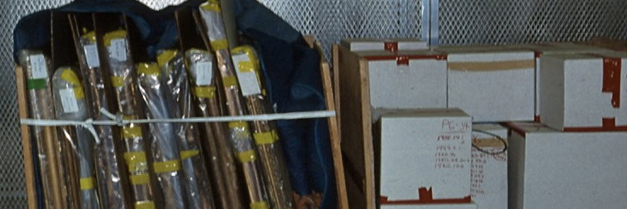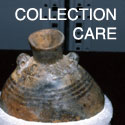Admin_TAG
Author
One of the best-known artworks at the Los Angeles County Museum of Art is Edward Kienholz’s “Back Seat Dodge ’38,” an assemblage that includes two faceless figures made of chicken wire and engaged in a sexual encounter in the back of an actual vintage car. Although it’s almost 40 years since the work first went on display, it still carries a certain titillation factor. In 1966, it sparked a controversy at the newly established museum and was declared pornographic by the county Board of Supervisors.
Condition reports are made to protect and to guide museums and collectors. The protection they afford often involves documenting the state of preservation of loaned property to the museum or for insurance purposes in the home. The guidance they offer is also helpful for long and short term storage and handling. Recording the physical condition […]
An inventory is an essential function of the registrar to fulfill the mission of the museum or to provide an accurate accounting of what the private client owns. The inventory usually addresses the maintenance of the object records, comprehensive accounting of the museum’s or owner’s holdings, smaller spot checks of specific collections, or outside auditor […]
A collection management policy is a working document that explains and sets the goals of a museum. One of the main goals, functions and purposes for the policy is that it sets guidelines for staff responsibilities. It is not a procedural document, but it can provide the basic information to set museums procedures. Making of […]
Policies and procedures in case of emergency and recommendations for safe housing and display of objects No disaster can be to big or to small. From large natural disasters to maybe a patron falling ill in the museum. A disaster plan or emergency plans are documents which state who is responsible on staff, floor plans […]
Monetary suggestions and procedures for safe transport and care of objects Storage renovations- vendor, monetary suggestions and solutions for safe care of objects when not on view Budgets for short and long term projects are essential in order for the administration to approve a desired project. Grants also require budgets to enable to see that […]
Data base conversions- suggested recommendations of database software for electronic record keeping Technology is changing rapidly. The registrar/collection management office was “late in the game” when it came to electronic records. It is now the museum registrar’s office standard to have an electronic collection management system (CMS). These systems enable the staff to organize collection […]
Procedures for an asset, given, bought or obtained by a museum to accession and record into the collection When a museum acquires objects for its collections, it can be obtained in a variety of methods. Most often objects are either given by donors or purchased from galleries, private collections or other vendors of objects. Other […]
Process and procedures used to remove permanently an object from a museum’s collection and to document the reasons for removal. As a common practice for museums and sometime controversial, deaccessioning objects from the collection occurs when the object is outside the scope of the institution’s mission, deteriorating so that it can no longer be […]
Coverage for loans, exhibitions and permanent collection objects Insurance is important for risk management and protection for your collection. This provides financial protection for the collection to so that you are protected from large and even catastrophic monetary loss. The extent of the coverage can be determined by the museum or private collector and […]













